Search Results
Fine Jewelry University Articles matching: “Loose sapphire”
Showing only FJU Article results. Click here to show all results.
Fine Jewelry University (Show All FJU Articles)
-
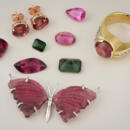
Gem in the Spotlight: Tourmaline
… is one of the most beautiful gems that you’ve probably never heard of. Less popular than the likes of ruby or sapphire, tourmaline flies under the radar in the gem world and remains the best kept secret of gem collectors and connoisseurs who… it for hundreds of years. But, before the advent of modern gemology, most tourmaline was believed to be ruby, sapphire, or emerald. Gemology of Tourmaline Gemologically speaking, tourmaline is its own mineral and not a species or member of a…
-
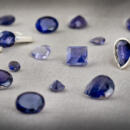
Gem in the Spotlight: Iolite
…near the top of the list. Iolite’s color range of blue, blue-violet, and violet competes for public attention with sapphire, tanzanite, and amethyst. They may have name recognition, but iolite has a rich, unique color and great gem value on …. The Gemology of Iolite Iolite is the gem variety of the mineral Cordierite. Iolite was once known as a “water sapphire”. Dichroite is another synonym for iolite. Dichroite is a Greek word which loosely translates as two-colored rock. This …
-

How Are Lab Grown Diamonds Made?
…quest continued. Diamonds are a crystalline form of carbon, and so making artificial carbon crystal was the problem of lab grown diamonds. For decades, manufacturers of synthetic gemstones tried growing diamonds like they grew rubies, sapphires, and emeralds. It failed. Then they had the idea to grow diamonds in the lab like they grew in nature. High Pressure High Temperature Diamonds How does nature form diamond crystals? Nature does it very deep underground. Diamond …
-
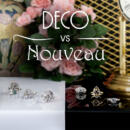
Art Deco vs. Art Nouveau Style Jewelry
…Art Deco jewelry design embraced symmetry, bold colors, and streamlined forms influenced by Cubism and the Machine Age. Precious metals like platinum and white gold alongside rare and valuable gemstones such as diamonds, emeralds, and sapphires, were the materials of choice for Art Deco jewelry makers. The most prevalent diamond cut found in Art Deco jewelry is the Old European cut, but some pieces still incorporated Old Mine cuts or transitional cuts. Design Principles Art…
-
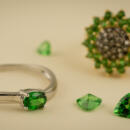
Gem in the Spotlight: Tsavorite Garnet
The discovery of Tsavorite in East Africa in the 1960s changed the jewelry world. Here was a gem with the color to rival the most exquisite emeralds and the clarity of the cleanest sapphires, all with the time tested durability of garnet. Tsavorite is a unique form of garnet with a stunningly vivid green color. It is bright and lively with a high refractive index giving it excellent sparkle and scintillation. Tsavorite …
-

How to Tell If a Diamond Is Natural or Lab Grown
… IIa test is only an indicator for the gemologist to use. There are lab grown diamonds that are not Type IIa, and there are natural diamonds that are Type IIa, so it’s not a 100% conclusive test. Also, a diamond has to be completely loose (unmounted) to perform the test. Photoluminescence Spectroscopy and UV Radiation Going beyond the Type IIa test, more advanced equipment exists that uses spectroscopic techniques to analyze gems. One such machine is the DiaTrue …
-
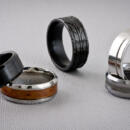
Alternative Metals for Men’s Jewelry
… 6,191 degrees Fahrenheit. Tungsten is rated at about a 9 on the Mohs scale of hardness which is the same as Ruby or Sapphire and just below diamond (which is 10). Like these gems, tungsten is very scratch resistant and will not bend out of …come in around 7-8 on the Mohs hardness scale which is about the same as quartz or topaz but softer than tungsten or sapphire. Like most alternative metals, cobalt chrome bands are hypoallergenic and biocompatible. But, in our experience, …
-
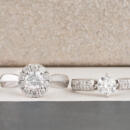
Anatomy of a Ring
… part that actually rests on top of the stone—is called the “tip.” It’s always a good idea to have your prongs checked by a jeweler, especially if it looks to you like any of the tips are missing or worn down, or if any stones are loose. The more tips that are thin or missing, the more likely you are to lose a stone. In addition to prong heads, you can also find bezel, half-bezel, and channel heads. A bezel head encircles the entire stone in metal and is possibly the …
-
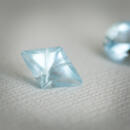
Gem in the Spotlight: Aquamarine
… in shades of blue-green. Aquamarine has a refractive index of 1.577 to 1.583 and is doubly refractive. Aquamarine’s specific gravity is 2.72 and it has a Mohs hardness of 7.5-8.0. For comparison, this means that it is softer than Sapphire, harder than Quartz, and similar to Topaz. This makes it a very durable stone that is suitable for regular wear. But, care should still be taken to ensure that the stone is not damaged. Caring For and Cleaning Aquamarine To maintain the …